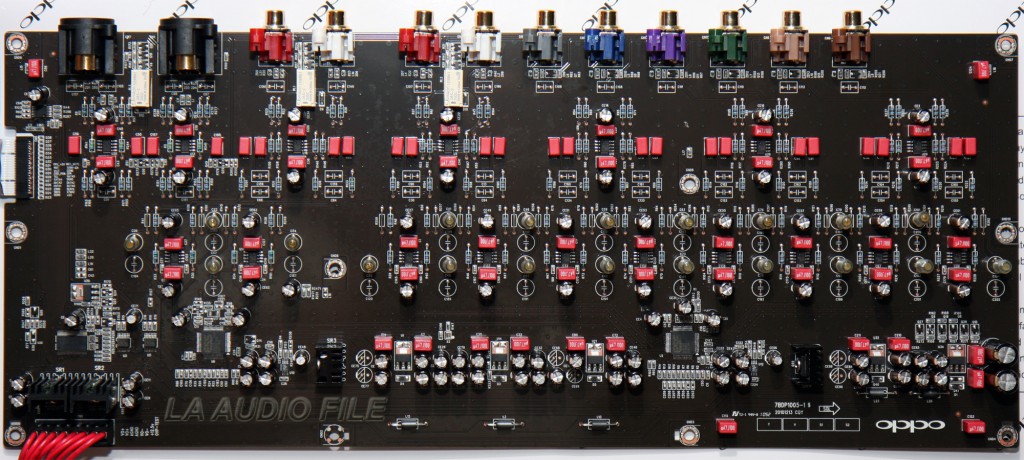
Many mass market DVD and Blu-ray players are capable of playing high-def audio, such as SACD (most Sony players have this capability since they invented it), DVD-A, and Blu-ray Audio. So how do they perform in a high end audio system?…
When looking at the signal path in these players, it boils down to three things, which you won’t typically find in the specs of mass market players (they wouldn’t be, since they aren’t really intended to play high end audio). These three things are, in order of their importance to your audio quality:
1 – D to A converters, also known as DACs. You want good quality DACs in your player, get it to output the analog signal (on RCA or XLR jacks), then get everything downstream in the signal path to leave it alone as much as possible (beyond amplification of course). That’s one of the many reasons why HDMI rains on the parade for a high end audio signal path.
2 – Discreet analogue signal path for all channels once the signal has been converted to analogue by the DACs. Take a closer look at the inside of the Oppo BDP-95 (which is not a mass market player) and you will immediately see what i am referring to).
3 – Transport mechanism. Pretty hard to screw this up too dramatically, but the higher end players make certain this is of the highest integrity so the digi info on the discs is read with as much accuracy as possible. Other’s fudge it with some sort of error correction protocol, such as parity. They recognize that there will be a certain % of errors reading the disc so they have algorithms to correct for that. Obviously, it is better still if the laser reads with as close to 100% accuracy as possible. The higher end units separate the Transport and the DACs into two components. very pricey of course, and the cost isn’t warranted by a digital sourced signal path IMHO, especially for CDs. Like I said, garbage in, garbage out… what ever else is claimed. But there are many who would beg to differ, until recently at least.
